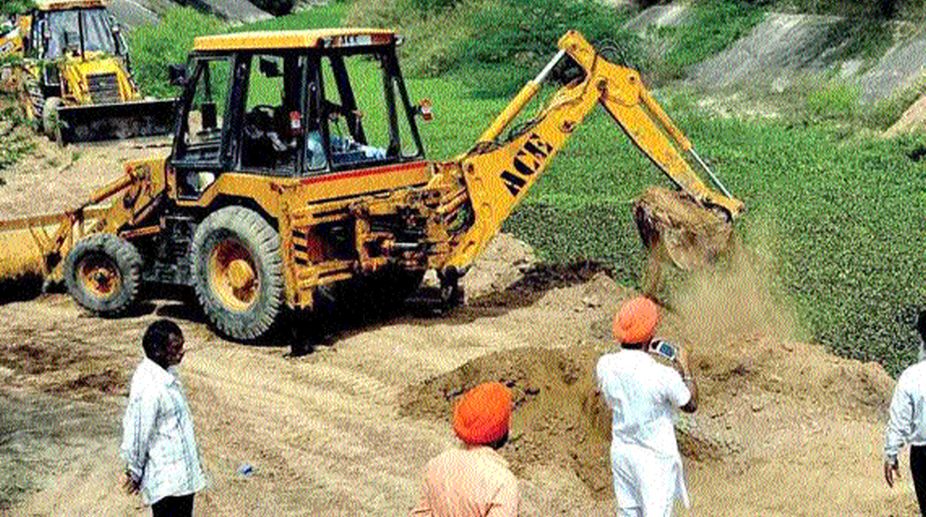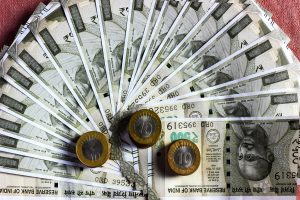America First’ embodied the framework of Donald Trump’s ‘development’ roadmap for the US economy, polity and narrative. The contours of walking the talk are now emerging from the strategic pointers in the recently released 2018 budget outline, the blueprint to make ‘America Great Again’. Measures for the supposed course-correction in US policy include sharp cuts in sovereign aid (from the Department of State and the US Agency for International Development), bilateral aid allocations, UN contributions, climate change financing, multilateral development banks, funds for health, funds for humanitarian assistance and international food aid ~ all in all, reflective of Trump’s electoral promise of ensuring that the global funding burden would be ‘shared more fairly among members’.
The essence of ‘development’ for the new US regime is rooted in the re-prioritisation of security issues over the more internationalist commitments and welfare funding ~ hence the savings from the proposed cuts are envisaged to boost military spending and finance the border wall with Mexico. The form and dimensions of the ‘America First’ plan are slowly but surely taking shape, even though sane voices are suggesting increasing unrest and instability, should the US persist with the ‘development strategy’ of Trump.
In India, a parallel sentiment was expressed in the successful pitching of the promise of Acche Din by the incumbent government. The initial roadmap included some administrative reforms like doing away with the culture of GoMs (Group of Ministers) and EGoMs (Empowered Group of Ministers) to address policy paralysis, federalising the Centre-State equation by doing away with the cosmos of the Planning Commission, to empowering the entrepreneurial spirit of India by invoking themes like ‘Make in India’, ‘Skill India’, etc. Now, three years into the government’s tenure, irrespective of the verdict and perceptions of the efficacy of the Central government’s initiatives, the centrality of ‘development’ as the most definitive attribute of political one-upmanship and electoral posturing has been firmly established in the country. Competitive ‘development’ politics by various political parties have replaced the traditional sloganeering appeal that was typically rooted in the rote permutations of social-economic-regional-religious domains, as the fundamental raison d’etre of most of the political parties. However, the dimensions of ‘development’ vary and are unique to the country, state and political parties in question, and are usually reflective of the pressing socio-economic challenge facing the geographical expanse.
In Punjab, the first cabinet meeting of the new government and the key decisions taken were reflective of the ‘development’ imperatives besetting Punjab, including a major crackdown on the drug industry, espousing the Punjab perspective on the contentious Sutlej-Yamuna Link canal, agricultural sops like loan waivers and some civic-administrative decisions aimed at expediting and improving civic governance abilities. Similarly, the principal constraint on ‘development’ of Manipur was sought to be addressed by the new government in Imphal with the lifting of the nearly four-month-long, crippling economic blockade, after the successful agreement between the United Naga Council, Manipur Government and the Centre. For once, economic ‘development’ issues are taking precedence over the traditionally emotive and regressive issues that appeal to the basic instincts of diverse denominations in local society, but have virtually no role in the real and sustainable ‘development’ of the area.
Yet, the national challenge is in the seamless integration of individual state ‘development’ agendas into the composite, force-multiplying and nationally-centripetal impact that could ensure the overall development of India. Multiplicity of political agendas of the various ruling parties, contradictory state interests (e.g. SYL canal issue between Punjab and Haryana) and the conflicting ideological considerations of the prevailing political thoughts, often confabulate against the free flow of development initiatives.
Thus, the spirit of the Central Government’s sabka saath, sabka vikas (literally, ‘collective efforts, inclusive growth’) gets mired in the accompanying optics of the choice of the supporting leadership e.g. in Uttar Pradesh. Questions on the ability to deliver ‘inclusive’ and all-pervasive development abound due to certain historical statements made, to the contrary. In an emotionally surcharged environment, polarised society and with the historical backdrop of unhealed civilisational wounds, even the otherwise linear and reasonable logic inherent in lines like, ‘Government has only one religion ~ India first!’, ‘Government has only one book ~ the Constitution’ and ‘The Government must be immersed in only one Bhakti ~ Bharat Bhakti!’, loses its innocence and acquires loaded dimensions, angularities and embedded perceptions.
Democracy is forever churning and auto-correcting as it facilitates topical platforms for the various sections of deprived groups. The societal inequities have given birth to many regional, religious, castiest and even occupation-centric pressure groups which subsequently morph into political entities, vying for their rightful share of the development pie. Often, the yeoman’s service offered by these ‘regional’ parties is under-appreciated for their ability to mainstream, highlight and address the much-needed corrections in the national outlook and governance systems. The phenomenon of AAP has its core appeal in its ability to espouse the invisible, latent and often-ignored socio-economic frustrations in the underbelly of the urbanised clusters ~ the silent and systemically-disabled majority that has been denied its share of opportunities. However, the ability to sustain its political future for a movement-based party like AAP depends on its ability to widen, mature and nuance its administrative outlook, leadership and organisational structure to be able to deliver beyond its initial appeal of ‘disruptive’ positivity.
Politics of ‘development’ in a democratic framework is naturally a slow-burn that necessitates a fine balance between pandering to the electoral appeal of populistic measures, and the equally important, though often-unpalatable, dosage of good economics. The correlation of literacy and the appeal of ‘development’ politics are inter-linked. Hence, states with lower levels of literacy and socio-economic parameters suffer at the altar of abject populism-politics that invariably bleed the coffers dry, besides worsening the future of the state. Therefore, along with increased literacy, a vibrant media, pro-active and effective opposition and an enabled culture of intellectual debate is needed to counter-check any regressive moves by the powers that be. Efforts to stifle a contrarian view must be avoided to ensure that only the most progressive, inclusive and sustainable policies are afforded on the people and the state. Most political parties disagree on the various elements and delivery mechanisms of ‘development’, and often weave in unnecessarily emotional, polarising and non-economic dimensions to dilute the efficacy and purity of ‘development’ politics. However, there has been an undeniable trend towards the competitive appropriation of the ‘development’ agenda and credentials of the various political parties. Increasingly, the conversations are laden with ‘development’ at the heart of political pitches and that can only augur well for India.
(THE WRITER IS LT GEN PVSM, AVSM (RETD), FORMER LT GOVERNOR OF ANDAMAN & NICOBAR ISLANDS & PUDUCHERRY)
Advertisement











